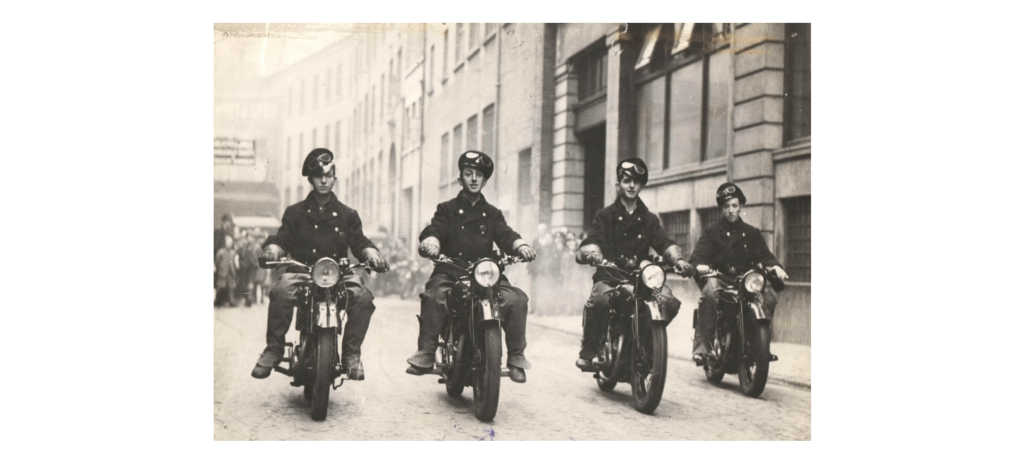The Digital Repository of Ireland (DRI) is delighted to announce that a new collection, Delivering the Mail – How the Post Office Worked, has been published in the Repository through An Post Museum and Archive.
The Post Office in Ireland has been, since the seventeenth century, the institution responsible for the conveyance and delivery of mail, letters, of course, and later parcels. Discharging this responsibility has involved the Post Office in many different fields, notably transport, mapping, road making and politics – to say nothing of related services in banking and new technologies such as telegraphy, the telephone and radio.
About the Collection
The Post Office was for many years the greatest revenue-generating department of the Irish State and one of its largest employers. The Delivering the Mail collection is an illustrative sample of the rich social and historical material held within the An Post Museum & Archive. The collection contains over fifty images ranging from envelopes to transportation to broadcasting history associated with delivering mail.
Some of the highlights include:

This image of an envelope tells of the cross-ocean journey from Clady in county Derry, to the city of Charlestown in South Carolina in 1847 – just under fifteen years before the outbreak of the American civil war. The envelope itself displays a fine strip of Twopenny Blue stamps – and the the Clady Derry post office marking is also very clear. The envelope tells a story of the Irish diaspora, and from the handwriting on the paper, the script and style of writing offers a rare and intimate glimpse into the people sending and receiving letters around 180 years ago.
Another fascinating item in this collection is a photograph of telegram messenger boys on their new motor cycles. Telegrams remained an essential part of Post Office business until the widespread use of telephones. Messenger boys, later renamed junior postmen, would deliver the telegrams on foot or bicycle. Motor cycles were introduced in 1928 on a trial basis and proved successful.
This photograph shows a group of four proud riders on new bikes in Prince’s Street beside the GPO.

DRI Director, Dr. Lisa Griffith said:
“We are delighted that An Post have ingested another collection into the Repository.
Stephen Ferguson’s careful curation and the rich content in Delivering the Mail: How the Post Office Worked adds untold value to these already important objects – ranging from stamps, envelopes and photographs – highlighing the histories of An Post.“
The Delivering the Mail collection can be viewed and downloaded in the DRI Repository.
You can keep up to date with all of our new collections by signing up to our newsletter.







